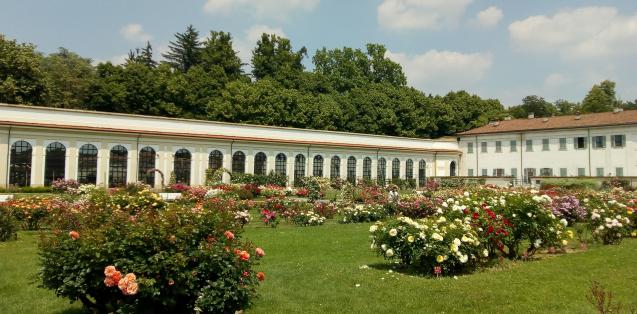Nowadays the Serrone (also known as the Orangerie) is the ideal location for hosting exhibitions, cultural events and temporary presentations of modern art. It was created in 1790, designed by architect Piermarini to accommodate citrus trees and shrubs, exotic or rare plants and precious botanical collections, particularly during the winter seasons.
Piermarini’s project was inspired by the Orangery at Schönbrunn Palace in Vienna and its construction was commissioned by Archduke Ferdinand of Hapsburg-Este who inaugurated it, along with the adjacent Rotunda frescoed by Andrea Appiani, on the occasion of his twentieth wedding anniversary to Maria Beatrice Ricciarda d'Este.
The structure (100m x 6m x 7m) is located along the main courtyard, at the far end of the north wing of Villa Reale, and is characterized externally by 26 large arched south-facing windows interspersed with pilasters and, internally, by the original wooden trusses.
Over the years, the Serrone has undergone several restorations, comprising the restructuration of the interior flooring. As can be seen, the original natural cobblestones have been replaced by terracotta paving. During the most recent renovations, in 1985, the interior of the Serrone was equipped with a system of modular sliding panels in order to better adapt the spaces for different purposes.


